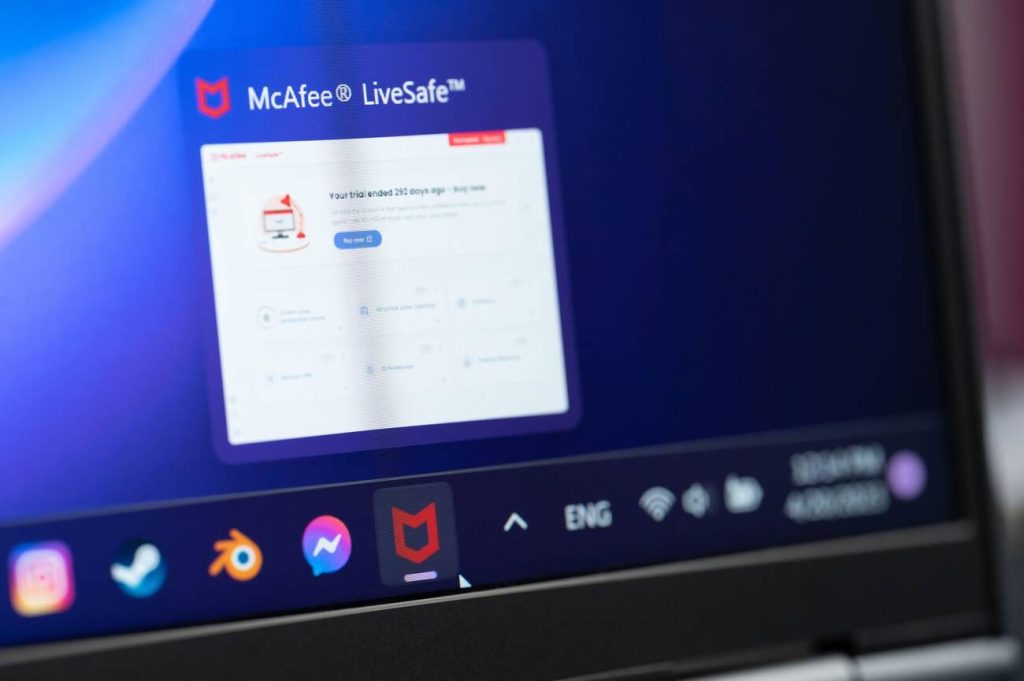Did you know that despite popular belief, Windows computers do not come with McAfee antivirus software pre-installed? In fact, Windows 10 has its own built-in protection called Windows Defender. However, relying solely on Windows Defender may leave your computer vulnerable to threats. That’s why it’s crucial to consider additional antivirus software like McAfee for comprehensive security. In this article, we’ll explore the importance of antivirus software for Windows and guide you through the process of installing McAfee on your computer.
The Importance of Antivirus Software for Windows
Relying solely on Windows Defender may leave your Windows PC vulnerable to certain threats, so it is recommended to install additional antivirus software like McAfee for complete protection. While Windows Defender provides basic protection against malware, it may not be as effective as dedicated antivirus software in detecting and removing advanced threats. Common vulnerabilities such as phishing attacks can also bypass Windows Defender’s defenses. Installing additional antivirus software can enhance your protection by offering features like real-time scanning, firewall protection, and advanced threat detection. Regular software updates are crucial for addressing security vulnerabilities and keeping your system secure. Using a dedicated browser for Flash and Java can minimize the risk of exploiting vulnerabilities associated with these technologies.
Windows Defender: Built-in Protection or Additional Software Needed
To ensure comprehensive protection for your PC, it is recommended to use additional antivirus software alongside Windows Defender. Here are four key points to consider:
- Windows Defender limitations: While Windows Defender provides basic protection against malware, it lacks endpoint protection and response capabilities. This means that relying solely on Windows Defender may leave your PC vulnerable to certain threats.
- Endpoint protection and response: To address this limitation, it is advisable to supplement Windows Defender with additional antivirus software or Microsoft’s Defender for Endpoint. These solutions offer advanced features like real-time threat intelligence and proactive threat hunting.
- Windows Defender vs other antivirus software: While Windows Defender is a decent option, there are several other antivirus software options available for Windows users. Paid subscriptions often provide more comprehensive protection and features compared to free versions.
- Effectiveness of free antivirus software: Free antivirus software can be effective in some cases but may have limitations such as compatibility issues and lack of firewalls. Researching and choosing the right antivirus software based on individual needs is crucial.
Exploring the Features of McAfee Antivirus
If you want enhanced security and comprehensive protection against evolving threats, it’s recommended to explore the features of McAfee antivirus software. McAfee antivirus provides a range of features to keep your computer safe from malware, viruses, and other online threats. It offers real-time scanning, firewall protection, web protection, and email filtering. With McAfee antivirus, you can enjoy benefits such as automatic updates for the latest security patches and a user-friendly interface that makes it easy to navigate and customize settings. However, it’s important to note that there may be some limitations with McAfee antivirus. Some users have reported performance issues such as slow system speed and high CPU usage. To optimize the performance of McAfee antivirus, you can try disabling unnecessary features or adjusting scanning schedules. If you’re looking for alternatives to McAfee antivirus, popular options include Norton Antivirus, Avast Antivirus, and Bitdefender Antivirus.
Comparing Free and Paid Antivirus Options for Windows
When comparing antivirus options for Windows, it’s important to consider the differences between free and paid versions. Here are four key factors to consider:
- Performance impact: Compare how free and paid antivirus software affect your computer’s speed and overall performance.
- Customer support: Evaluate the level of customer support provided by both free and paid antivirus software providers, including response time and assistance offered.
- Malware detection rates: Analyze the effectiveness of both free and paid antivirus software in detecting and removing malware, including their ability to identify new threats.
- System resource usage: Examine how much system resources (CPU, memory) are consumed by both free and paid antivirus software on Windows computers.
- Additional features: Explore the additional features and functionalities offered by paid antivirus software compared to their free counterparts, such as firewalls, password managers, or parental controls.
Windows 10: Understanding the Built-in Security Measures
Understanding the built-in security measures in Windows 10 is essential for safeguarding your system. Windows 10 provides regular security updates to address vulnerabilities and protect against emerging threats. By keeping your system up to date with these updates, you can ensure that your computer remains secure. Additionally, it is important to be aware of common windows vulnerabilities and take necessary precautions. Using a dedicated browser for Flash and Java can minimize vulnerabilities associated with these technologies. Encrypting and password protecting files adds an extra layer of security to prevent unauthorized access. Lastly, avoiding phishing attempts by being cautious of unfamiliar links, messages, emails, and attachments will help protect your personal information from falling into the wrong hands. Stay proactive in securing your Windows 10 system for a safer computing experience.
Steps to Enhance Security on Windows Computers
Enhancing security on your Windows computer can be achieved by following these steps:
- Practice strong password management: Use unique, complex passwords for all your accounts and consider using a password manager to securely store them.
- Enable two-factor authentication: Add an extra layer of security by requiring a second form of verification, such as a code sent to your phone, when logging into accounts.
- Configure firewall settings: Ensure that your computer’s firewall is enabled and properly configured to block unauthorized access and protect against potential threats.
- Regularly update your system: Install software updates as soon as they become available to address vulnerabilities and protect against the latest security threats.
- Practice safe browsing practices: Be cautious when clicking on links or downloading files from unfamiliar websites, emails, or messages to avoid phishing attempts or malware infections.
How to Install McAfee Antivirus on a Windows Computer
To install McAfee Antivirus on your Windows PC, follow these steps. First, ensure that your system meets the minimum system requirements: Windows 7 or later, 2GB RAM, and at least 500MB of free disk space. Next, purchase a subscription from McAfee’s website or authorized retailers. Once you have the product key, download the installation file from the official website. Run the installer and follow the on-screen instructions to complete the installation process. After installation, launch McAfee Antivirus and activate it using your product key. For troubleshooting tips, visit their support page for FAQs and guides. Keep in mind that there are alternative antivirus options available such as Norton or Avast if McAfee doesn’t meet your needs. Pricing for McAfee varies depending on the plan you choose.
| Step | Description |
|---|---|
| 1 | Check System Requirements |
| 2 | Purchase Subscription |
| 3 | Download Installation File |
| 4 | Run Installer and Follow Instructions |
| 5 | Launch and Activate McAfee Antivirus |
Note: This table provides a visual representation of the steps mentioned above for easier understanding of the installing process.




